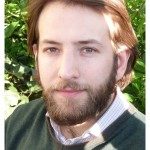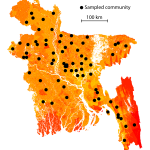Link to Pubmed [PMID] – 22645364
Proc. Natl. Acad. Sci. U.S.A. 2012 Jun;109(24):9535-8
It is well-known that the distribution of immunity in a population dictates the future incidence of infectious disease, but this process is generally understood at individual or macroscales. For example, herd immunity to multiple pathogens has been observed at national and city levels. However, the effects of population immunity have not previously been shown at scales smaller than the city (e.g., neighborhoods). In particular, no study has shown long-term effects of population immunity at scales consistent with the spatial scale of person-to-person transmission. Here, we use the location of dengue patients’ homes in Bangkok with the serotype of the infecting pathogen to investigate the spatiotemporal distribution of disease risk at small spatial scales over a 5-y period. We find evidence for localized transmission at distances of under 1 km. We also observe patterns of spatiotemporal dependence consistent with the expected impacts of homotypic immunity, heterotypic immunity, and immune enhancement of disease at these distances. Our observations indicate that immunological memory of dengue serotypes occurs at the neighborhood level in this large urban setting. These methods have broad applications to studying the spatiotemporal structure of disease risk where pathogen serotype or genetic information is known.

